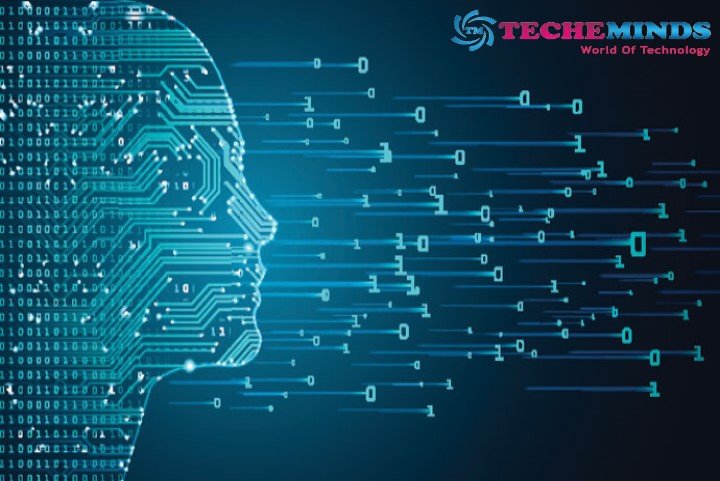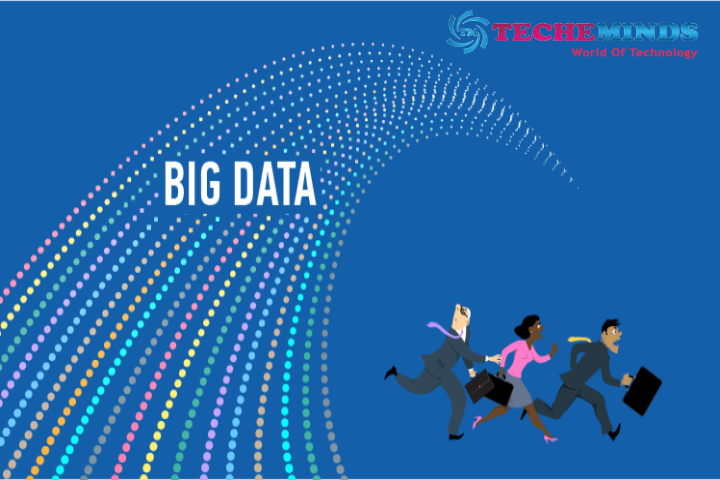What Is The Future Of Big Data in 2020

Future Of Big Data: Have you ever wondered what Big Data is and what it is for? We understand as Big Data the amounts of large-scale data that exceed the capacity of conventional software to be captured, processed and stored in a reasonable time.
The concept also encompasses the infrastructures, technologies and services that have been created to manage this large amount of information.
According to IDC, the amount of data stored in the world is doubling every two years. The data explosion that we are witnessing is a consequence of the digital revolution and the great adoption by citizens and companies of tools and technologies such as social networks, mobile devices, geolocation, and objects and sensors connected to the Net – the Internet of Things.
Thus, understanding what Big Data is and what it is for implies also knowing the entire context of data generation in which we are participants.
To give us an idea, every day we use many devices through which a huge amount of information is emitted: every time we click on a web page, we pay by credit card, we publish images on social networks, we turn on the GPS, etc. All of these (and many more) actions produce massive data that must be processed.
We are therefore facing a new revolution that introduces great opportunities and, at the same time, important challenges for our companies. In this article, we will try to shed light on what it is and what it is for.
Table of Contents
What is Big Data 2020 and what is it for?
In short, when we talk about Big Data we are not only referring to data but above all to the ability to exploit it to extract information and knowledge of value for our business. The purpose of it is to be able to design new products and services based on the new insights we acquire about our clients, about our competition, or the market in general.
Once the information is collected and stored, indicators must be extracted that can be useful for making decisions, even in real-time. So the truth about what it is and what it is for goes far beyond just thinking about “big data.”
The Five “Vs” of Big Data
The first question that comes to mind when considering what BigData is and what it is for, is related to how big the data has to be considered Big. Finally, the correct approach is not to set size at all, but relative. What may seem like a large size of data to us now, in two or three years, maybe normal or even irrelevant? Most experts define it in terms of the five “Vs”:
Volume:
As we have seen, the amount of data is defined “Big” not when it exceeds a defined size, but when its storage, processing and exploitation begins to be a challenge for an organization.
Speed:
The second characteristic of BigData is related to the rate at which data is being generated, which tends to increase constantly and which needs a response in real time by companies.
Variety:
However, the main challenge lies in the great difference in the different formats in which we find the data, which can range from simple text, to images, videos, spreadsheets and entire databases.
Accuracy:
In addition, the data must be reliable and must be kept clean. A large amount of data is worthless if it is incorrect and can be highly damaging, especially in automated decision making.
Value:
Finally, the data and its analysis must generate a benefit for companies.
Types of Big Data
When classifying “big data” we can do it according to two criteria: origin and structure.
Thus, according to its origin, the data can come from different sources, among others:
Web and Social Networks:
information available on the Internet as Web content, generated by users in their activity on social networks or information from search engines.
Machine-to-Machine (M2M):
data generated from the communication between intelligent sensors integrated into everyday objects.
Transactions:
Includes billing records, calls or transactions between accounts.
Biometrics:
data generated by the identification technology of people through facial recognition, fingerprint or genetic information.
Generated by people:
Through emails, messaging services or call recordings.
Generated by both public and private organizations:
Data related to the environment, government statistics on population and economy, electronic medical records, etc.
On the other hand, depending on its structure, the data can be:
Structured:
data that has its format, size and length defined, such as relational databases or Data Warehouse.
Semi-structured:
data stored according to a certain flexible structure and with defined metadata, such as XML and HTML, JSON, and spreadsheets (CSV, Excel).
Unstructured:
data without specific format, such as text files (Word, PDF, emails) or multimedia content (audio, video, or images).

What is Big Data for in companies?
Once we have accepted that the data is here to stay, the next question is about the advantages that it can represent for our organization. In this sense, a study carried out by Bain & Company clearly demonstrates the competitive advantages that early adopter companies can obtain from Big Data.
- Twice as likely to obtain a higher financial return than the average for your industries.
- Five times more likely to make decisions much faster than your competitors.
- Three times more likely to execute decisions on schedule.
- Twice as likely to make data-driven decisions.
Real Examples
To understand in a practical way what BigData is and what it is for, let’s see some real examples of its use:
Marketing customer segmentation.
Many companies use this to adapt their products and services to the needs of their clients, optimize operations and infrastructures, and find new fields of business.
Sports performance optimization
Devices such as smart watches automatically record data such as calorie consumption or fitness levels.
Public health coding of genetic material
For example, there are BigData analysis platforms dedicated to decoding DNA strands to better understand diseases and find new treatments.
New technologies development of autonomous devices.
BD analysis can help improve machines and devices, and make them more autonomous. An example is smart cars.
Security crime detection and prevention
Law enforcement agencies use Big Data to locate criminals or prevent criminal activities such as cyber attacks.
Tools to implement Big Data in companies
Big Data needs new tools and technologies that can encompass the complexity of ever-expanding and unstructured data. For this, traditional relational database technologies or RDBMS are not adequate. In addition, advanced analytics and visualization applications are needed, in order to extract the full potential of the data and exploit it for our business goals.
So, after understanding what Big Data is and what it is for, let’s see some of its main tools:
Hadoop:
It is an open source tool that allows us to manage large volumes of data, as well as analyze and process it. Hadoop implements MapReduce, a programming model that supports parallel computing on large collections of data.
NoSQL:
These are systems that do not use SQL as a query language, which, despite not being able to guarantee the integrity of the data (ACID principles atomicity, consistency, integrity and durability), allows them to obtain significant gains in scalability and performance when working with Big Data. One of the most popular NoSQL databases is MongoDB.
Spark:
It is an open source cluster computing framework that allows data to be processed quickly. It allows writing applications in Java, Scala, Python, R and SQL and works both on Hadoop, Apache Mesos, Kubernetes, as well as independently or in the cloud. You can access hundreds of data sources.
Storm:
It is a free-source distributed real-time computing system. Storm allows to process unlimited data streams in real time in a simple way, and can be used with any programming language.
Hive:
It is a Data Warehouse infrastructure built on Hadoop. It makes it easy to read, write, and manage large data sets that reside on SQL-distributed storage.
R(programming languages):
It is one of the most widely used programming languages in statistical analysis and data mining. It can be integrated with different databases and allows generating high quality graphics.
JavaScript:
it is a JavaScript library to produce dynamic and interactive visualizations of data in web browsers, using HTML, SVG and CSS.
4 key steps to get on
In order to start enjoying the benefits of this technology after knowing what is Big Data? and what it is for, any organization needs to have four key assets:
- In an environment where data is exploding, its availability doesn’t seem to be the problem.
- What should concern us is rather being able to maintain their quality, and knowing how to handle and exploit them correctly.
- For this, the appropriate analytical tools are needed, which is not a barrier for companies today, due to the high availability in the market of both proprietary and open source tools and platforms.
- Which brings us fully to the third fundamental asset, which is the human factor. Having the right professionals in our organization, such as data scientists, but also experts in the legal implications of data management and privacy, is emerging as the most important challenge.
However, getting these three assets and putting them to work will not ensure success with Big Data either. To be true data driven companies, we will need to undergo a radical transformation of our business processes and culture, to make data truly at the center of our company, and to ensure that all departments, from IT to senior management, take on this new focus.
The challenges of Big Data
Today, no company can ignore the issue of what Big Data is and what it is for, because the implications that this technology can have on business are many.
However, it is a relatively new and continually evolving concept, and there are more than a few challenges organizations face when it comes to dealing with big data. Among them:
The technology:
Tools with Hadoop are not as easy to manage and require specialized data professionals as well as significant maintenance resources.
Scalability:
Project can grow with great speed, which is why a company has to take it into account when allocating resources so that the project is not interrupted and the analysis is continuous.
Talent:
The profiles necessary for BigData are scarce and companies face the challenge of finding the right professionals and, at the same time, training their employees on this new paradigm.
The insights actionable:
Versus the amount of data, the challenge for a company is to identify clear business objectives and analise the appropriate data to achieve them.
Data quality:
As we have seen previously, it is necessary to keep the data clean so that decision-making is based on quality data.
The costs:
The data will continue to grow, which is why it is important to correctly size the costs of a Big Data project, taking into account both its own facilities and personnel and the hiring of suppliers.
Security:
Finally, it is necessary to keep data access safe, which is achieved with user authentication, access restrictions, encryption of data in transit or stored and complying with the main data protection regulations.
Conclusion
We have seen the great benefits of Big Data for companies, as well as the main challenges of its implementation. Now, you know what it is and what it is for. Those organizations that know how to take these factors into account will be able to launch successful projects and will gain a significant competitive advantage when creating new products and services.
Also Read : Follow These Top Ten Big Data Trends




